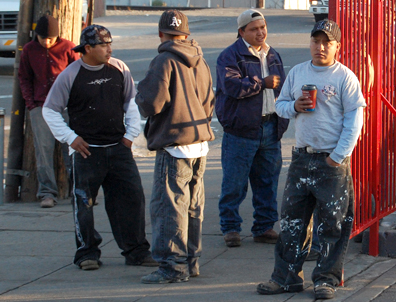
Few days ago, the so-called Gang of Eight senators revealed a blueprint for an immigration reform bill. Details in the actual legislation will matter a great deal but these are initial impressions based on the blueprint. The good and the bad.
Good:
- Earned legalization for non-criminal unauthorized immigrants. After paying fines, back taxes, undergoing a criminal background check, and other firm penalties, unauthorized immigrants will be able to stay in the United States and eventually earn a green card. This will increase their wages over several years much faster than if they remained unauthorized.
- DREAMers will not face the same penalties as unauthorized immigrants who intentionally broke U.S. immigration laws, which is a positive step.
- Legalization for unauthorized immigrant workers in the agricultural industry will be fast-tracked. This is especially important because the majority of farm workers in most states are unauthorized immigrants.
- Removing some regulatory barriers and increasing quotas for highly skilled immigrants. This will likely include an increase in the number of employment based green cards and removing the per-country quotas that produce wait times for Indian, Chinese, Mexican, and Filipino workers. Currently, numerous firms and immigrants are dissuaded from even trying to obtain employment based green cards because of the enormous wait times.
Bad:
- Increases the amount of resources spent on border security. The size of the border patrol is double of what it was in 2004. The number of border patrol agents is seven times greater than what it was in the 1980s with about nine times as many on the southern border. More technology and aerial drones on the border will be wasteful and not produce results.
- Strong employment verification system like E-Verify. As I wrote here, here, and here, E-Verify is an intrusive big government workplace identification system that does not even root out unauthorized immigrants. In Arizona, which has had mandatory E-Verify since 2008, many unauthorized immigrants have moved deeper into the black market, some industries fire numerous unauthorized workers but don’t hire natives to fill the spots, and the business formation rate dropped because the penalties for intentionally or knowingly hiring unauthorized workers are so draconian.
- Increases regulations for guest worker visas. Current guest worker visas for agricultural workers are so over-regulated that they are barely used. Adding more regulations will only make the visas more unusable and incentive American farmers and employers to hire unauthorized workers.
A viable guest worker program will increase economic growth in the United States. Guest worker visas are not as good as green cards for lower-skilled workers, but they are the only viable option at this moment. The devil is in the details but this blueprint does not provide for enough future low-skilled immigration.

